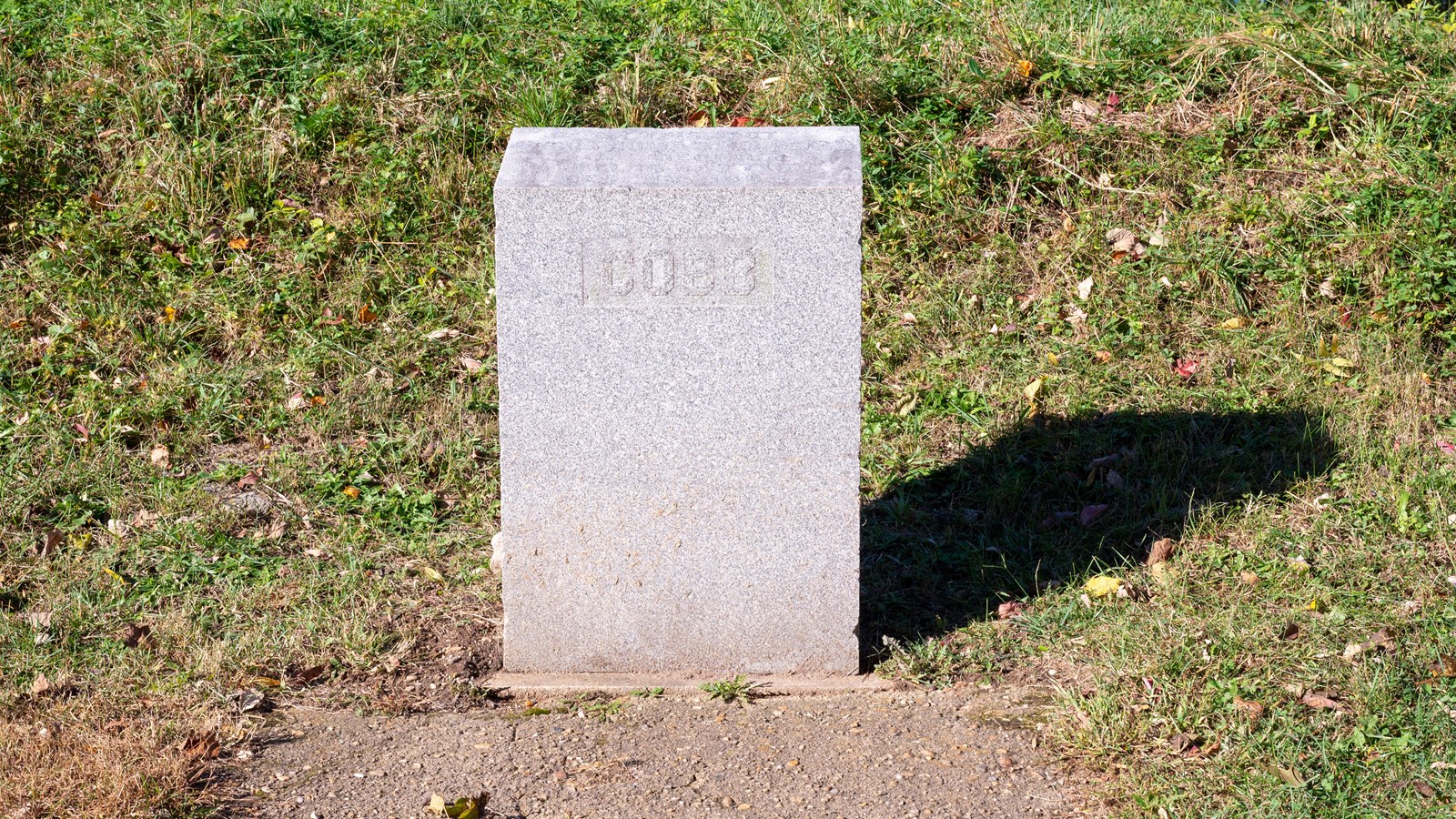Last updated: July 28, 2025
Place
Cobb Memorial

NPS Photo
Thomas Reade Rootes Cobb was a prominent lawyer in Georgia before the war, most well-known for writing An Inquiry Into the Law of Negro Slavery in the United States of America. Cobb’s legal defense of slavery was the most significant proslavery argument of its day, and made Cobb a leading figure in the secession movement in his native state of Georgia.
Rather than pursue a political career in the Confederacy, in 1862 Cobb organized a military unit known as Cobb’s Legion. On November 1, 1862, after performing well in the campaigns of that year, the 39-year-old Cobb was promoted to brigadier general, taking command of the brigade formerly led by his brother, Howell.
Just a few months shy of his 40th birthday, Fredericksburg would be Cobb’s first battle as a general, and defending the Sunken Road his first test. He embraced the challenge, and had written to his wife late in November, “We hear their drums and bands plainly and my blood boils whenever I hear them.”
Cobb and his troops, who occupied the position on the Sunken Road, received the brunt of the Federal assaults. However, Cobb would not witness most of these attacks. At midday, about twelve or fifteen minutes after the repulse of the first Federal assault, the general was struck in the thigh by an artillery shell fragment. A staff officer placed the wounded general on a stretcher and carried him to a field hospital at the Wiet house, located approximately three miles back along the Telegraph Road. There surgeons sought to stanch the crimson flow coming from the wound, but their efforts were in vain. Tom Cobb was dead.
The exact date of the monument is unknown. An article in the March 21, 1888, Fredericksburg Star announced the Cobb family’s intention of raising a granite shaft “just opposite Mrs. Martha Steven’s gate and in Col. Richardson’s lot, to mark the spot where the General received his mortal wound.”
[Top]
ON THIS SPOT
GEN. THOMAS R.R. COBB
OF GEORGIA
FELL IN BATTLE
DEC. 13, 1862.
[East Face]
Rather than pursue a political career in the Confederacy, in 1862 Cobb organized a military unit known as Cobb’s Legion. On November 1, 1862, after performing well in the campaigns of that year, the 39-year-old Cobb was promoted to brigadier general, taking command of the brigade formerly led by his brother, Howell.
Just a few months shy of his 40th birthday, Fredericksburg would be Cobb’s first battle as a general, and defending the Sunken Road his first test. He embraced the challenge, and had written to his wife late in November, “We hear their drums and bands plainly and my blood boils whenever I hear them.”
Cobb and his troops, who occupied the position on the Sunken Road, received the brunt of the Federal assaults. However, Cobb would not witness most of these attacks. At midday, about twelve or fifteen minutes after the repulse of the first Federal assault, the general was struck in the thigh by an artillery shell fragment. A staff officer placed the wounded general on a stretcher and carried him to a field hospital at the Wiet house, located approximately three miles back along the Telegraph Road. There surgeons sought to stanch the crimson flow coming from the wound, but their efforts were in vain. Tom Cobb was dead.
The History of the Monument
The Cobb Memorial is among the oldest monuments in the park. Several years after the war, Editor Rufus B. Merchant of the Fredericksburg Daily Star conceived the idea of erecting a memorial to General Cobb at the site where he received his mortal wound. Merchant, a former member of Cobb’s Legion, wrote a letter to the Augusta, Georgia, Chronicle, suggesting that the State of Georgia purchase Martha Stephens’s house on the Sunken Road and create a small park there in memory in memory of Cobb’s Georgia Brigade, the centerpiece of which would be a monument to the fallen general. Although several Georgia newspapers endorsed Merchant’s proposal, Cobb’s family disapproved, fearing that a public fundraising effort might “have the semblance of ostentation, and perhaps excite jealousies....” Instead, the family erected a small monument of its own in 1888.The exact date of the monument is unknown. An article in the March 21, 1888, Fredericksburg Star announced the Cobb family’s intention of raising a granite shaft “just opposite Mrs. Martha Steven’s gate and in Col. Richardson’s lot, to mark the spot where the General received his mortal wound.”
Description
The Cobb Memorial consists of a single granite block, rectangular in shape, with its top surface slanted slightly toward the front. Made entirely polished stone, the marker is 2’0” wide, 1’0” deep, and stands 3’0” tall in back and 2’9” tall in front. It is inscribed:[Top]
ON THIS SPOT
GEN. THOMAS R.R. COBB
OF GEORGIA
FELL IN BATTLE
DEC. 13, 1862.
[East Face]
COBB
